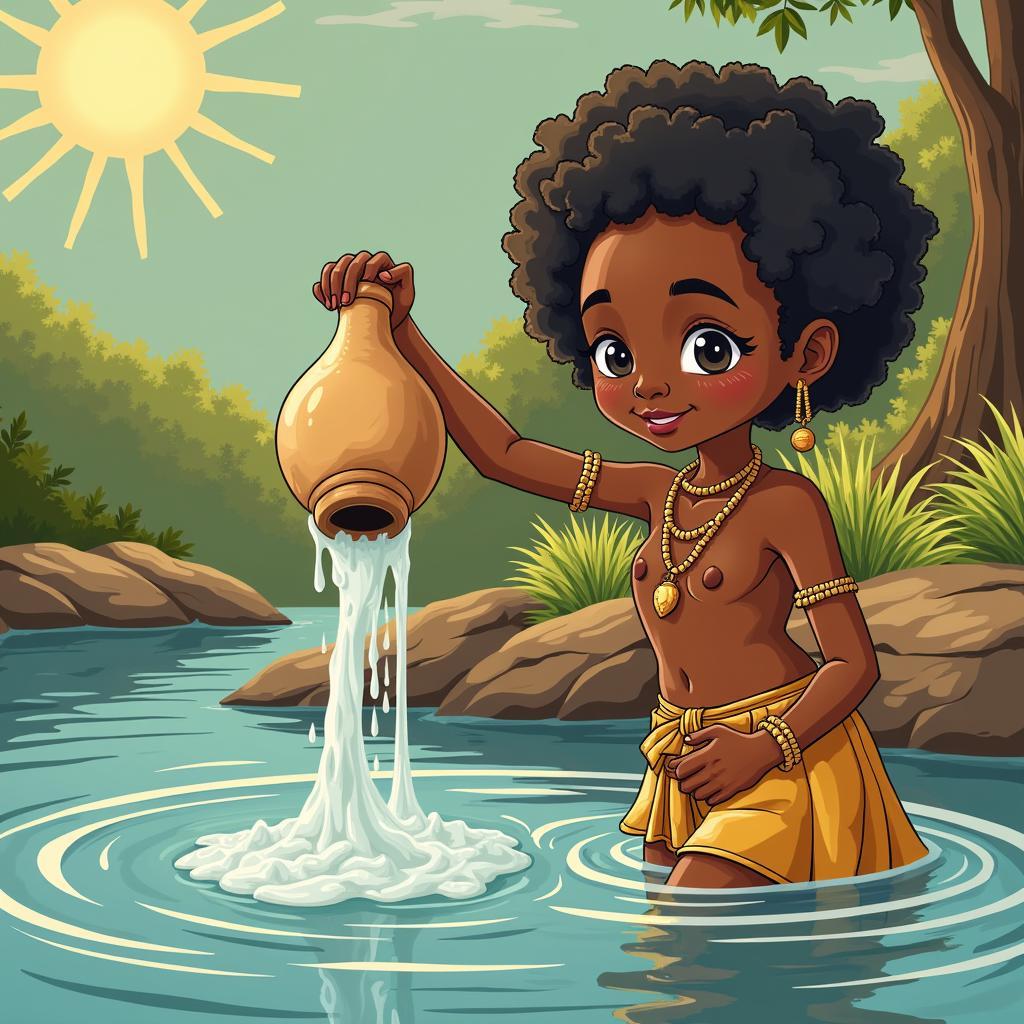The Majestic African Female Elephant Trunk: A Symbol of Power and Grace
The African Female Elephant Trunk, a remarkable appendage, is a testament to the power and grace of these magnificent creatures. It plays a crucial role in their survival, from foraging for food and water to complex social interactions. We’ll delve into the fascinating world of the African female elephant trunk, exploring its anatomy, functions, and significance. difference between asian elephant and african elephant
Understanding the Anatomy of the African Female Elephant Trunk
The trunk of an African female elephant is a marvel of natural engineering. It’s essentially a fusion of the upper lip and nose, forming a long, muscular, and highly flexible structure. This incredible organ contains over 40,000 muscles, allowing for an astonishing range of movement and dexterity. Imagine the strength and control needed to lift heavy logs or delicately pluck a single blade of grass! This intricacy is what sets the African elephant apart.
The tip of the trunk is particularly fascinating, featuring two finger-like projections, much like a human hand. These projections are essential for fine motor control, allowing the elephant to pick up small objects, manipulate tools, and even greet other elephants with a gentle touch. The sensitivity of the trunk is remarkable, enabling the elephant to detect subtle differences in textures, smells, and even vibrations in the ground.
The Multifaceted Functions of the African Female Elephant Trunk
The African female elephant’s trunk serves a multitude of purposes, showcasing its versatility and importance to their daily lives. From breathing and drinking to communication and defense, the trunk is integral to their survival.
- Breathing: The trunk acts as a snorkel, allowing the elephant to breathe even when submerged in water.
- Drinking: The trunk can suck up vast quantities of water and then spray it into the mouth for drinking or over the body for a refreshing shower.
- Eating: The trunk is used to forage for leaves, branches, fruits, and grasses, which are then skillfully manipulated and placed into the mouth.
- Social Interaction: Elephants use their trunks to greet each other, caress their young, and even discipline unruly calves.
- Defense: In times of danger, the trunk can be used to ward off predators or deliver powerful blows.
The trunk is a key component in the complex social lives of African elephants, allowing for communication through touch, smell, and sound. For instance, a gentle trunk wrap around another elephant can convey comfort and reassurance.
The African Female Elephant Trunk and Social Bonding
The trunk plays a vital role in the intricate social bonds within elephant herds, particularly between mothers and their calves. african elephant offspring A mother will use her trunk to guide, protect, and nurture her young. She’ll gently caress her calf with her trunk, offering comfort and reassurance. This tactile communication strengthens the bond between mother and calf. The trunk also allows calves to learn essential survival skills by mimicking their mothers’ actions.
How Does the African Female Elephant Trunk Compare to the Asian Elephant’s?
While both African and Asian elephants possess trunks, there are distinct differences. african and asiatic elephants The African elephant’s trunk has two finger-like projections at the tip, while the Asian elephant has only one. This difference reflects the varying environments and foraging habits of the two species.
“The trunk is not just an appendage; it’s an extension of the elephant’s being,” notes Dr. Anika Sharma, a renowned elephant biologist. “It embodies their intelligence, their sensitivity, and their deep connection to their environment.”
Conclusion: Appreciating the African Female Elephant Trunk
The African female elephant trunk is much more than just a nose or a lip; it’s a multifaceted tool that is essential for survival, communication, and social bonding. Understanding its intricate functions and significance helps us appreciate the remarkable adaptations of these magnificent animals. Let us continue to support conservation efforts to ensure that future generations can marvel at the majesty of the African female elephant and its incredible trunk. african elephant fact sheet
FAQ
- How many muscles are in an African elephant’s trunk? Over 40,000.
- What are the finger-like projections on the trunk used for? Fine motor skills and manipulation.
- How do elephants use their trunks for communication? Touch, smell, and sound.
- What is the main difference between an African and Asian elephant’s trunk? The number of finger-like projections at the tip.
- How do mother elephants use their trunks with their calves? For care, guidance, and reassurance.
- What are some of the main functions of an African elephant’s trunk? Breathing, drinking, eating, social interaction, and defense.
- How does the trunk contribute to an elephant’s survival? Allows them to access food, water, and defend themselves.
“Observing elephants interact using their trunks is a humbling experience,” shares Dr. Zara Mtwana, a Tanzanian wildlife expert. “It reveals a level of emotional intelligence and social complexity that is truly awe-inspiring.”
Other Questions You Might Ask
- How far can an elephant’s trunk reach?
- Can elephants use their trunks to smell underwater?
- What is the role of the trunk in an elephant’s sense of touch?
For further information on elephant behavior, see our article on african bush elephant behavior.
When in need of any assistance, please do not hesitate to contact us.
Phone Number: +255768904061
Email: [email protected]
Address: Mbarali DC Mawindi, Kangaga, Tanzania.
We have a dedicated 24/7 customer support team ready to help you.




